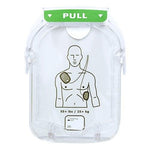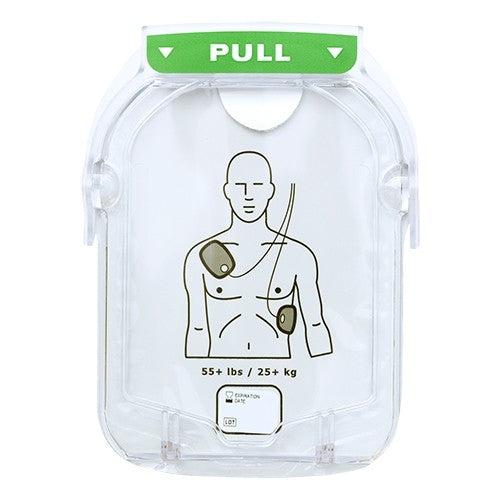
£89.98 GBP inc. VAT
Electrode pads are essential for reviving individuals experiencing sudden cardiac arrest.
They facilitate the delivery of a shock to the patient and must be in optimal condition before use to ensure maximum effectiveness. They are housed in a protective plastic casing to shield them from dust and moisture.
Key features
- Secure packaging keeps the electrode pads pristine and ready for use
- Designed to be pre-connected, allowing the AED to recognize and assess the pads until needed
- Clear, prominent visuals guide untrained responders in placing the electrode pads correctly
- Strong adhesive ensures the pads remain in place during treatment
- Up to 2-year shelf life if unused
How to use
After attaching to the patient, follow the visual instructions on the back of the pads. The electrodes will then start analyzing the patient's heart rhythm.
The AED monitors this data to decide if treatment is necessary, which will only be recommended if the heart exhibits either VF (ventricular fibrillation) or VT (ventricular tachycardia).
Free Engraving Available!
Personalize Your Littmann Stethoscope with Free Engraving! Make It Uniquely Yours Today.
Use code 'FREE' at checkout.

